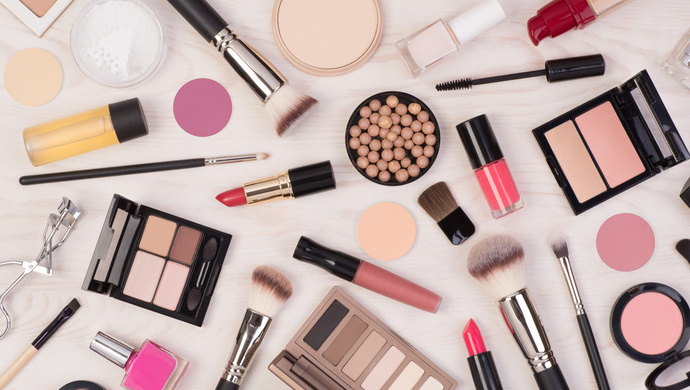In this article:
- Key Facts About the Cosmetic Industry
- Big Players in the Cosmetic Industry
- The Earliest Cosmetic Industry Patents
- Famous Cosmetic Industry Design Patent Case: Egyptian Goddess v. Swisa
- Design Search Analysis
Key Facts About the Cosmetic Industry
- The US cosmetic industry was worth $93.5 billion in 2019
- The global cosmetic industry is worth over $500 billion
- 51% of consumers want to see images that are not photo-shopped
- There are almost 1 million employees in the service segments of the cosmetic industry
Source: www.loudcloudhealth.com
Big Players in the Cosmetic Industry
Here are the world’s top ten largest companies in the cosmetic industry:
L’Oréal
Founded in 1909, L’Oreal generates more than US$30bn annually in beauty product sales. Its product range includes makeup, skincare, haircare, sun protection, and fragrances. L’Oreal also owns beauty merchants such as The Body Shop.
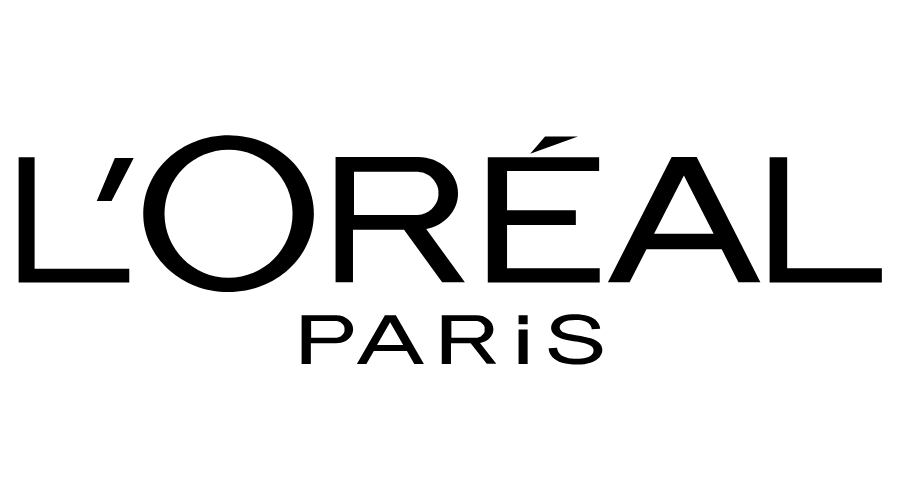
Unilever
Unilever is one of the biggest consumer goods companies in the world and has also succeeded in establishing itself in the cosmetics industry with brands such as Axe/Lynx, Vaseline, Dove, Pond’s, TRESemmé, and Sunsilk.
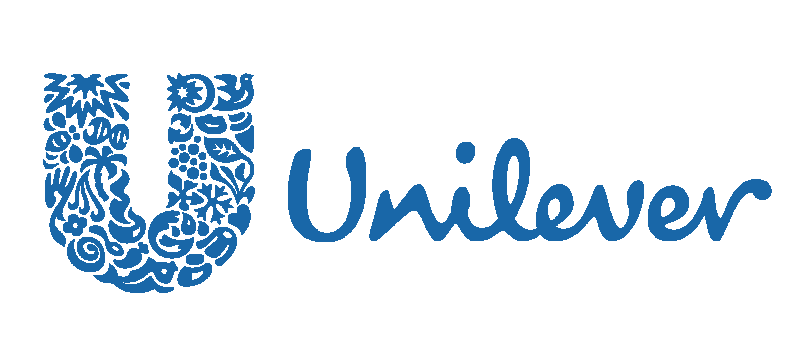
Estée Lauder
Formed in the 1940s, Estée Lauder manufactures and markets quality skincare, fragrances, makeup, and haircare. The company has over 25 brands that are sold in 150 countries.
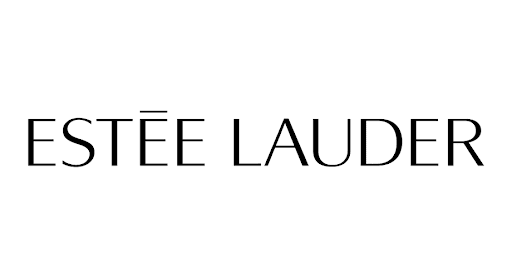
Proctor and Gamble
P&G is a major player in the skincare and haircare business with well-known brands such as Gillette, Aussie, Herbal Essences, Pantene, Head & Shoulders, Olay, Oral-B, and Crest.

Coty
New York-based based Coty is a prominent player in the beauty industry. The company owns brands such as Clairol, Adidas, CoverGirl, Max Factor, David Beckham, Katy Perry, Rimmel, Wella, and Sally Hansen. Marc Jacobs, Chloé, Calvin Klein, Gucci, and Hugo Boss are some of Coty’s high-end brands.
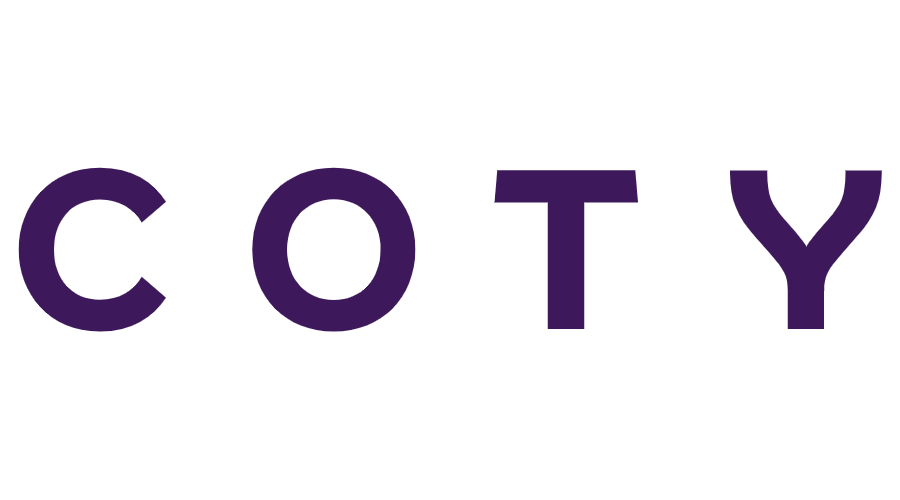
Shiseido
Shiseido was established in 1872 in Tokyo, as the original Western-style pharmacy in Japan. Shiseido produces skincare, haircare, fragrances, sun protection, makeup, and body care.
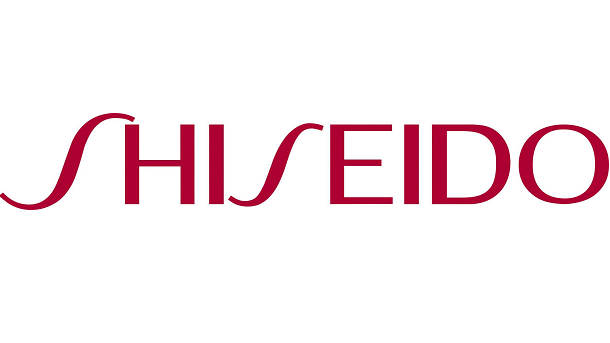
Beiersdorf
Beiersdorf has been a skincare industry pioneer for 130 years. The company’s products include skin and body care brands. Beiersdorf’s brands include Nivea, Labello, Eucerin, and La Prairie. The company operates across different markets, including the mass market, dermo-cosmetics, and the exclusive cosmetics market.
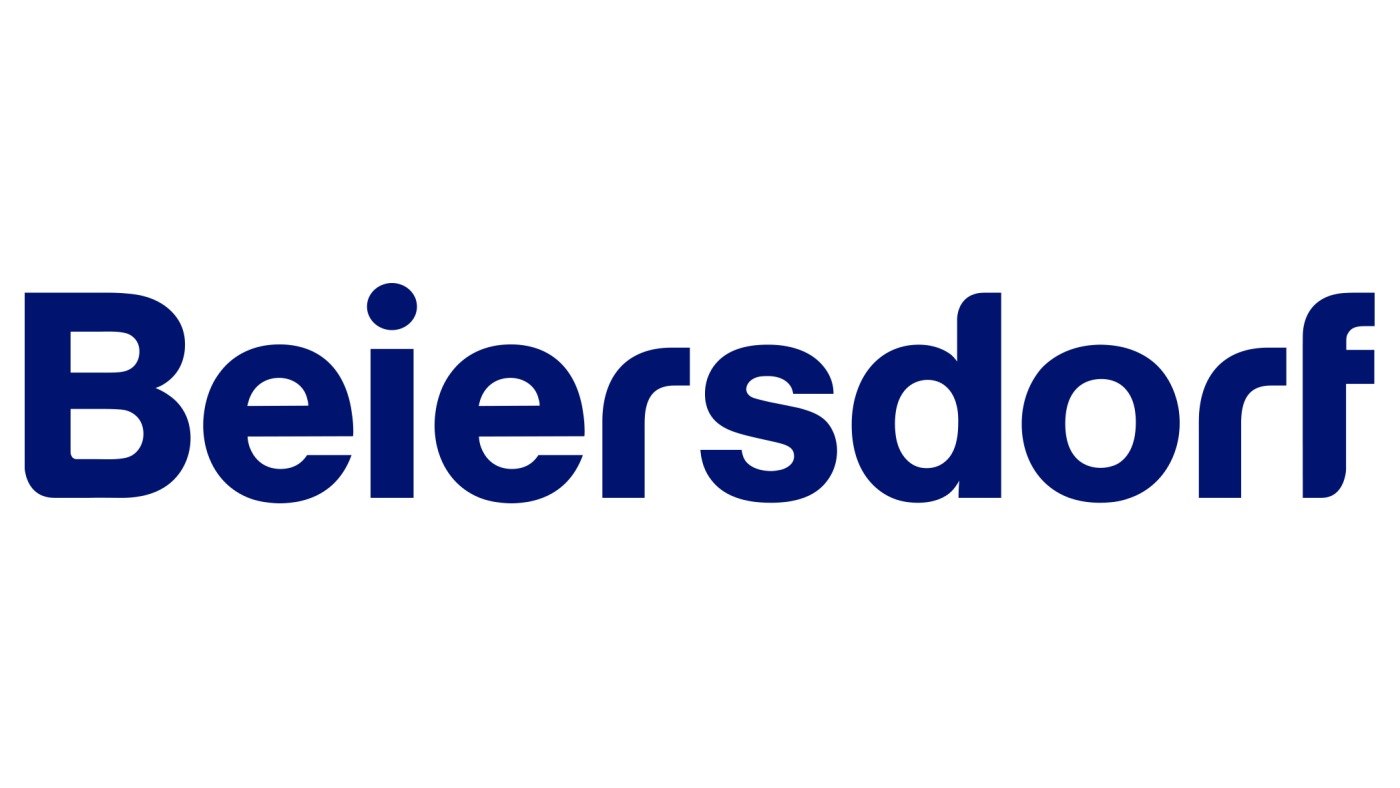
Johnson & Johnson
Predominantly a pharmaceutical company, Johnson & Johnson is also known for its beauty products, including baby care, skincare, and oral hygiene products. It’s most well-known brands include Johnson’s Baby, Neutrogena, Aveeno, and Listerine. J&J generated more than $76 billion in revenue in 2017.

Amore Pacific
South Korean beauty products company Amore Pacific launched its cosmetics brand AMOREPACIFIC in 2002. The company which concentrates fundamentally on producing natural beauty products has gradually made a name for itself in the beauty industry, benefiting greatly from the K-beauty trend. The company is expanding at an accelerated pace with rising demand for some of its most famous brands, such as Mamonde, Sulwhasoo, Etude, and Annick Goutal.
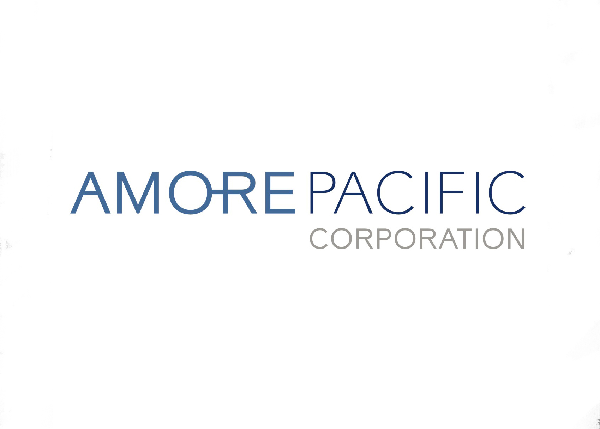
Kao Corporation
Kao Corporation is listed in the Forbes ranking as a USD 34.4 billion company. Japan-based Kao sells products such as skincare, color cosmetics, cleansers, and hair care. Kao’s brands include John Frieda, Bioré, Jergens, and Goldwell.
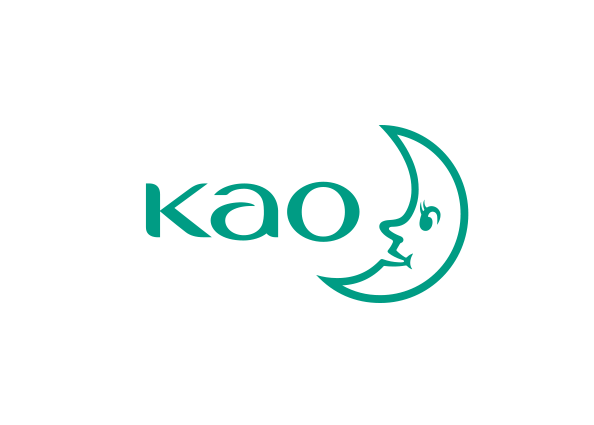
The Earliest Cosmetic Industry Patents
The act of wearing makeup was born at least 7,000 years ago by the ancient Egyptians.
However, the makeup industry was developed during the 1910s in the US by Elizabeth Arden, Max Factor, and Helena Rubinstein. These companies were joined by Revlon a little before World War II, Estée Lauder was created just after.
Let’s take a look at some of the earliest cosmetic patents:
Lipstick Holder
The earliest patent for a metal lipstick tube comes from the inventor William Kendall. Kendall’s patent (US1236846A) was filed in January 1917.
Kendall’s objective statement was:
“…the provision of a neat, ornamental and serviceable lipstick holder which may be cheaply manufactured and readily assembled.”
The fundamental design of this container was a tube to contain a stick of rouge, covered by a cap and including something he called ‘a lipstick receiving follower,’ which enabled the lipstick to be moved up and down within the tube.
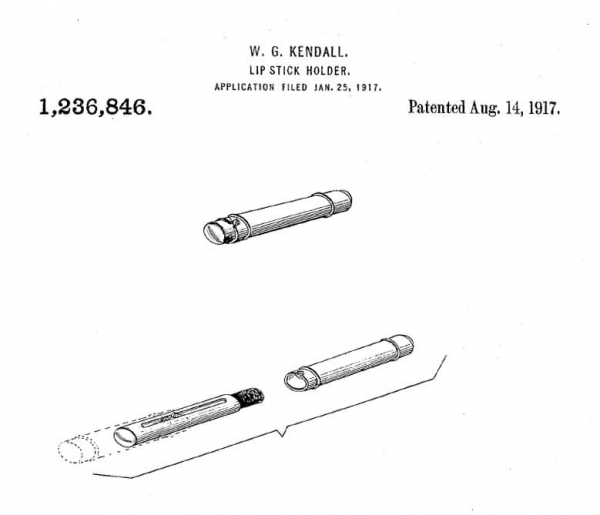
Mascara
Modern mascaras appear to be using a patent that was granted to Frank L. Engel Jr. in 1939 (US2148736). Engel’s patent was also used for John Robert Powers’ “Mascara-In-the-Round” in the 1950s.
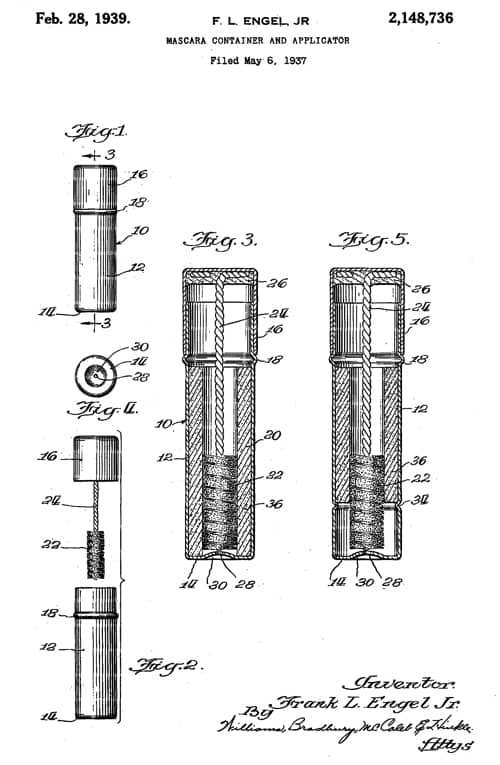
Toothbrush
The first toothbrush patent was granted to H.N. Wadsworth in 1857 (US18,653.) However, mass production didn’t start until 1885. The improved design had a bone handle and Siberian boar hair bristles.
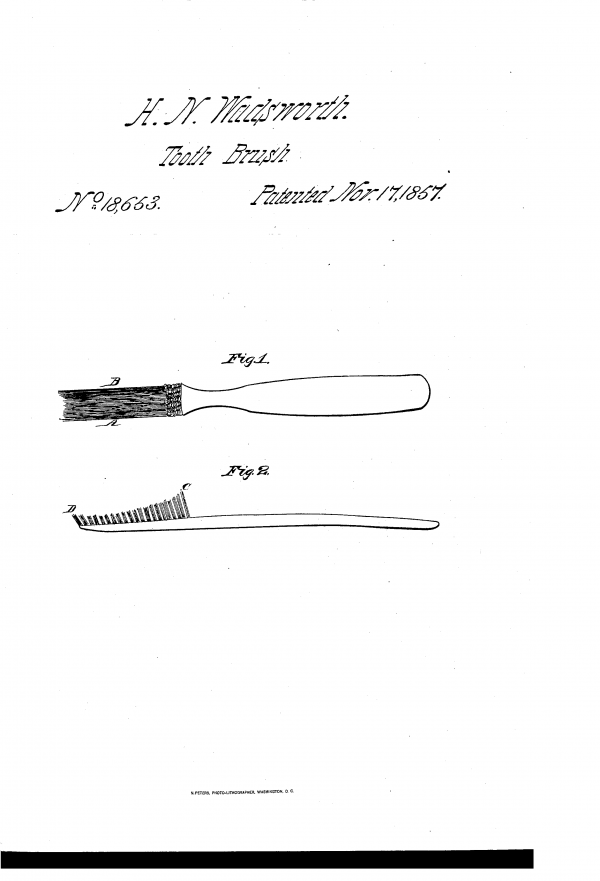
Hairdryer (blow dryer)
Gabriel Kazanjian, the Armenian-American inventor was the first to patent a blow dryer in the US, in 1911 (US994259A.) In approximately 1920, handheld hairdryers went onto the market.
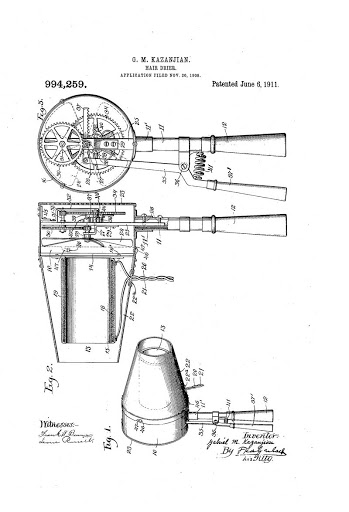
Famous Cosmetic Design Patent Case: Egyptian Goddess v. Swisa
This particular design patent infringement case was a real turning point for patent infringement law. In fact, this case is considered one of the most important cases in US design patent history.
Egyptian Goddess Inc. and Swisa Inc. both sell nail care, skincare, and bodycare products. The case went to court in 2008, where Egyptian Goddess Inc. wanted to sue Swisa Inc. for design patent infringement. The alleged infringing product in question was a nail buffer.
Egyptian Goddess claimed that the point of novelty of US design patent D467,389 was the unique mixture of four design components, which were all independently recognized in the prior art.
The district court awarded summary judgment of non-infringement, stating that Egyptian Goddess could not meet its burden following the point of novelty test. The point of novelty test is one of two necessary tests to ascertain design patent infringement under the current Federal Circuit law.
The two tests are as follows:
The ordinary observer test requires evidence that an “ordinary observer” would believe that the accused design is so similar to the patented design that it would cause confusion to a potential customer.
The point of novelty test requires evidence that the accused design/product includes the “points of novelty” that separate the patented design from the prior art.
It’s worth noting at this stage that this particular design patent infringement case was held en banc, which means that the case was heard before all of the judges of a court, instead of the pre-selected panel.
In this particular design patent infringement case, the court added a new requirement, one that had never been introduced to any other design patent infringement case before.
The Non-Triviality Requirement was employed, meaning that the four established design elements belonging to Egyptian Goddess (open hollow body; square cross-section; raised rectangular pads; and exposed corners) that had been declared in the patent’s claim were classed as a non-trivial advance over the prior art.
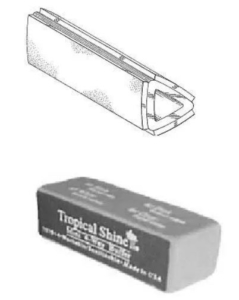
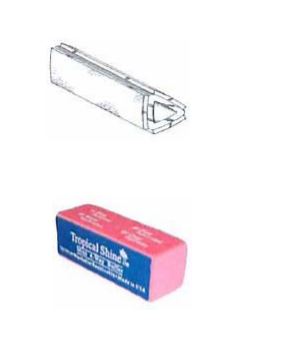
The court agreed that the combination of the different elements was trivial, meaning that the combination couldn’t serve as a point of novelty, therefore concluding that the design patent had not been infringed upon.
Egyptian Goddess appealed the decision, and the appeal was granted. The case was, once again, en banc, and it addressed the Non-Trivial Requirement and the suitable legal standard to be followed regarding the claim construction component of design patent infringement.
On appeal, the district court’s non-infringement decision was upheld. The panel recognized that the prior art disclosed every element of the claimed design, but the challenged Swisa nail buffers had raised coarse pads on all four sides of the nail buffer (not just on three sides like the patented design.)
The judge also stated that the new non-trivial advance test inadequately concentrated on the obviousness of each point of novelty, instead of the obviousness of the design as a whole.
Design Search
We used Design Search by Patentcloud to take a look at the accused design and to see if any other similar designs (in particular the patented nail buffer) appeared in the search results.
Here are the design drawings for the Egyptian Goddess D467,389 patent.

And here is the accused Swisa design:
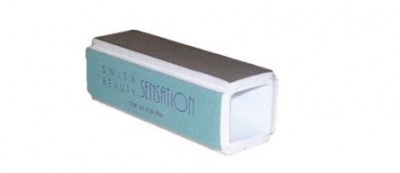
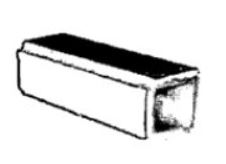
We dropped the Swisa buffer image into Design Search by Patentcloud to take a look at the results and compare the two designs side-by-side.

We found the patented design, thus allowing us to compare the two designs side-by-side. By utilizing this feature, the Design Search user can get greater insights into any possible similarities between any two design patents.

Design Search enabled us to check and compare the two designs instantly, alleviating the pain of looking through lots of paperwork, documents, and pictures.
As you can see, Design Search can be used to minimize the risk of design patent infringement and to give the designer or inventor the upper hand as they can instantly see whether or not their design is unique.
Design Search includes the design patent databases of the USPTO, JPO, EUIPO, and CNIPA.
For a 7-day free trial of this powerful design patent search tool, simply click here.
